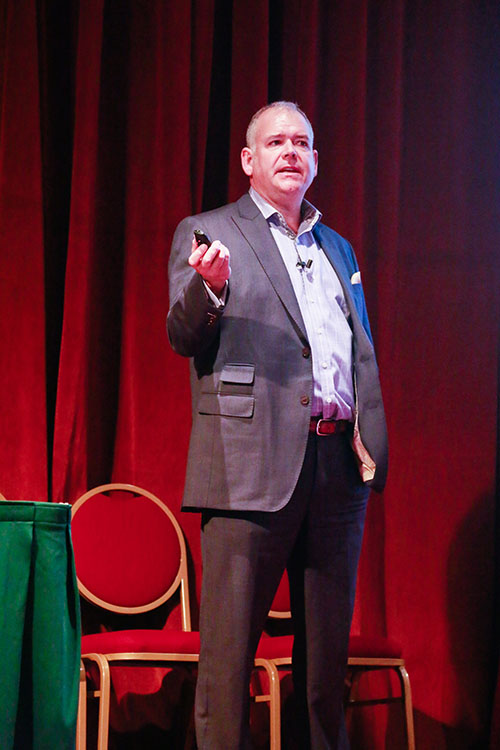
How to Design Better Consumer-Driven Health Plans
It’s been a decade of change for health care plan designs. And consumer-driven health plans (CDHPs) are the biggest change of all, according to John Young, CEO of Consumerdriven.
Young explained why CDHPs are “nearing universal use” and why employers need them at The Alliance Annual Meeting Oct. 25.
“Employers have led the way in consumerism and value-based health care purchasing,” Young said. “By 2018, we expect 75 percent of employers will offer CDHPs.”
Why Are Consumer-Driven Health Plans Important?
CDHPs’ financial incentives put decision-making into the hands of consumers, making them more prudent purchasers of health care.
“As Milton Friedman said, ‘We spend other people’s money differently than our own’,” Young said. “With these plans, we behave differently around health purchasing and health decisions.”
Many chronic conditions such as cancer, stroke, heart disease and diabetes are largely caused by lifestyle decisions, Young said. It turns out that the type of benefit plan matters in helping people get healthier. In studies comparing CDHPS and traditional plans, Young said CDHPs are shown to lower health risks, primarily because employees become invested in improving their own health.
Designing for an Employee “Win”
To be effective, CDHPs must be designed so the employee can “win,” which happens when the employer contributes to the health savings account (HSA) or health reimbursement account (HRA).
“Many current plan designs include sub-optimal employer funding in the HSA or HRA accounts,” Young said, “More funding gives employees a chance to win.”
Properly-designed CDHP plans will save money as behaviors shift. By the fifth year after adoption, a CDHP plan is expected to save an employer 25 percent compared to the cost of a traditional plan.
“As part of the evolution of consumerism, private exchanges are gaining traction by offering greater personalization and increased options in benefit strategies,” said Young.
Employees, especially Millennials, like private exchanges because they value greater flexibility in benefits.
Young said Millennials want access to everything and complete transparency. And they don’t accept the word, “No.” They expect the same of their employer-sponsored benefits. They value the opportunity to create their own customized benefit plan.
How Can You Influence Employees to Make Better Lifestyle and Health Care Decisions?
Young offered these tips to encourage employees to make better health decisions:
- Develop your company to be a culture of health. Provide more employee incentives to encourage consumerism as well as healthy outcomes and activities.
- Be aware that higher deductibles coupled with larger accounts creates stronger consumerism.
- Get involved on a “real” level by creating stronger one-on-one relationships that help employees begin to change. Support and encouragement will make all the difference.
- Give access to decision support tools. Show that cost and quality are not the same wherever you go.
- Help consumers estimate out-of-pocket costs.
Health care literacy is another concern for employers.
“Despite the growing adoption of CDHPs, we sadly don’t understand health care and how to navigate it,” Young said. “There’s a huge need and opportunity to help people understand.”
HRAs vs. HSAs and Other Heath Plan Design Ideas to Ponder
“HRAs are a viable option,” Young said. “They can provide a more flexible plan than a HSA.”
Employee contributions are another consideration. For half of employers, less than 40 percent of employees are currently contributing to HSAs. HSAs become more attractive to employees and their families when employers agree to partially fund the HSA.
“This is a big deal; please contribute to the HSA,” Young said. Partially-funding HSAs is often the deciding factor in choosing an HSA in an option environment.
Employers can keep consumerism strong with plan design tweaks, such as changing prescription coverage to a co-insurance design after the deductible is met.
There are a lot of ideas to ponder when creating a better CDHP for your employees.
“Today, many people have these plans but don’t feel empowered to really make the difference,” Young told employers. “It will take some effort but with your help we will create empowered health care consumers, and that will make all the difference.”
[box]
Learn More about Consumer-Driven Health Plans
- Tips on Getting Your Health Benefit Plan off to a Great Start!
- High-Deductible Plans Lead to Lower Health Care Costs
- Self-funding Plans Gain Steam in the Private Sector
[/box]







